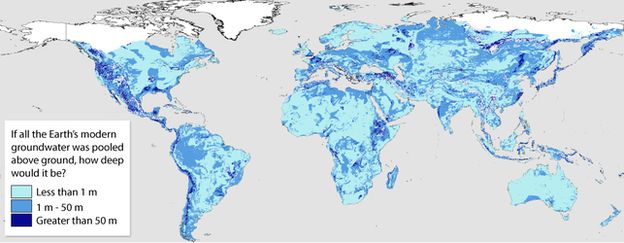Human societies will soon start to experience adverse effects from manmade climate change, a prominent economist has warned.
Prof Richard Tol predicts the downsides of warming will outweigh the advantages with a global warming of 1.1C - which has nearly been reached already.
Prof Tol is regarded by many campaigners as a climate "sceptic".
He has previously highlighted the positive effects of CO2 in fertilising crops and forests.
His work is widely cited by climate contrarians.
"Most people would argue that slight warming is probably beneficial for human welfare on net, if you measure it in dollars, but more pronounced warming is probably a net negative," Prof Tol told the BBC Radio 4 series Changing Climate.
Asked whether societies were at the point where the benefits start to be outweighed by consequences, he replied: "Yes. In academic circles, this is actually an uncontroversial finding."
But it is controversial for climate contrarians, who often cite Professor Tol's work to suggest that we shouldn't worry about warming.
Managing ecosystems
Matt Ridley, the influential Conservative science writer, said he believed the world would probably benefit from a temperature rise of up to 2C.
"I think we probably will see 1.5 degrees of warming. The point is most people think 2C is when it turns catastrophic. That's not right. The literature is very clear; 2C is when we start to get harm. Up until then we get benefit," he said.
"We've got a greening in all ecosystems as a result of CO2. We've got about 11% more green vegetation on the planet than 30 years ago, much of which is down to the CO2 fertilisation effect."
On fertilisation Matt Ridley refers to unpublished work by Professor Ranga Myneni from Boston University.
But he told BBC News Lord Ridley had accurately quoted his research on the impacts of current CO2 levels, but was unduly complacent about future warming.
"I am worried about how this work is being interpreted, by Lord Ridley. In my opinion, [CO2 fertilisation] benefit of greening is not worth the price of all the negative changes," he said.
Richard Tol from Sussex University believes discussion over the impacts of a 2C temperature rise is largely irrelevant as the world is likely to warm by between 3-5C, because politicians at the forthcoming Paris climate summit won't be willing or able to make the scale of cuts needed to keep temperature rises under 2C.
He says a rise of 4C would be undesirable but manageable for Europe and all nations rich enough to cope with the costs of adaptation. The best way of combating climate change, he told BBC News, was to maximise economic growth.
Warming feedback
Tim Lenton, professor of Earth systems science from Exeter University, told us this was a highly optimistic prognosis under a 4C rise.
"The land surface of central Europe would be quite a lot more than 4C warmer on average, changing potentially the pattern of seasonality over Europe.
"We would have lost the summer Arctic sea-ice, [and] would have sea-ice cover radically thinned in winters.
"We're seeing already that appears to have some connection to changes in the pattern of weather and weather extremes and the changes in the distribution of rivers and river flows.
"We might then speculate about how intense Mediterranean drying might drive... movements of people. It would be a very different Europe."
Johan Rockstrom, director of the Resilience Centre at Stockholm University, warns that the further we go above 2C, the more we risk triggering irreversible effects.
"What takes us to 6C is not carbon emissions, it is biosphere response. Will we be able to maintain the natural carbon sinks in the permafrost, in the rainforests, in the boreal forests, in the wetlands and in the coastal regions? Because that's where the big stores are.
"We emit nine gigatons of carbon per year from our burning of fossil fuels, but there's a 100 gigatons lying just under the Siberia tundra. You have many-fold larger stores of carbon in the topsoil of tropical soils, or under the ice in the Arctic.
"If we don't manage the living ecosystems well enough they could start biting us from behind."
From BBC News-Science/ Environment







